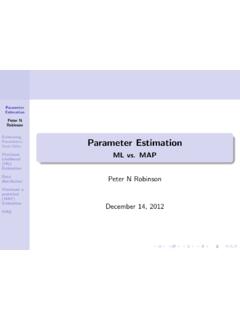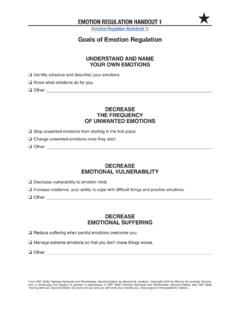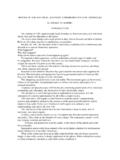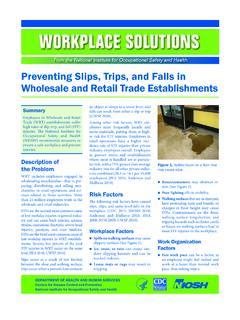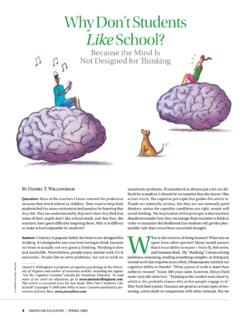Transcription of 4 Steps to Manage Your Diabetes for Life
1 ENGLISH. Steps to Manage Your Diabetes for Life National Diabetes Education Program A program of the National Institutes of Health and the Centers for Disease Control and Prevention This booklet gives four key Steps to help you Manage your Diabetes and live a long and active life. Contents Step 1: Learn about Diabetes 1. Step 2: Know your Diabetes ABCs 5. Step 3: Learn how to live with Diabetes 8. Step 4: Get routine care to stay healthy 11. Things to remember 12. My Diabetes Care Record 13. To learn more 16. Actions you can take The marks in this booklet show actions you can take to Manage your Diabetes . Help your health care team make a Diabetes care plan that will work for you.
2 Learn to make wise choices for you Diabetes care each day. STEP 1: Learn about Diabetes . What is Diabetes ? There are three main types of Diabetes : Type 1 Diabetes Your body does not make insulin. This is a problem because you need insulin to take the sugar (glucose) from the foods you eat and turn it into energy for your body. You need to take insulin every day to live. Type 2 Diabetes Your body does not make or use insulin well. You may need to take pills or insulin to help control your Diabetes . Type 2 is the most common type of Diabetes . Gestational (jest-TAY-shun-al) Diabetes Some women get this kind of Diabetes when they are pregnant. Most of the time, it goes away after the baby is born.
3 But even if it goes away, these women and their children have a greater chance of getting Diabetes later in life. 1. You are the most important member of your health care team. You are the one who manages your Diabetes day by day. Talk to your doctor about how you can best care for your Diabetes to stay healthy. Some others who can help are: dentist nurse Diabetes doctor nurse practitioner Diabetes educator pharmacist dietitian social worker eye doctor foot doctor friends and family mental health counselor 2. How to learn more about Diabetes . Take classes to learn more about living with Diabetes . To find a class, check with your health care team, hospital, or area health clinic.
4 You can also search online. Join a support group in-person or online to get peer support with managing your Diabetes . Read about Diabetes online. Go to Take Diabetes seriously. You may have heard people say they have a touch of Diabetes or that their sugar is a little high. These words suggest that Diabetes is not a serious disease. That is not correct. Diabetes is serious, but you can learn to Manage it. People with Diabetes need to make healthy food choices, stay at a healthy weight, move more every day, and take their medicine even when they feel good. It's a lot to do. It's not easy, but it's worth it! 3. Why take care of your Diabetes ? Taking care of yourself and your Diabetes can help you feel good today and in the future.
5 When your blood sugar (glucose) is close to normal, you are likely to: have more energy be less tired and thirsty need to pass urine less often heal better have fewer skin or bladder infections You will also have less chance of having health problems caused by Diabetes such as: heart attack or stroke eye problems that can lead to trouble seeing or going blind pain, tingling, or numbness in your hands and feet, also called nerve damage kidney problems that can cause your kidneys to stop working teeth and gum problems Actions you can take Ask your health care team what type of Diabetes you have. Learn where you can go for support. Learn how caring for your Diabetes helps you feel good today and in the future.
6 4. STEP 2: Know your Diabetes ABCs. Talk to your health care team about how to Manage your A1C, Blood pressure, and Cholesterol. This can help lower your chances of having a heart attack, stroke, or other Diabetes problems. A for the A1C test (A-one-C). What is it? The A1C is a blood test that measures your average blood sugar level over the past three months. It is different from the blood sugar checks you do each day. Why is it important? You need to know your blood sugar levels over time. You don't want those numbers to get too high. High levels of blood sugar can harm your heart, blood vessels, kidneys, feet, and eyes. What is the A1C goal? The A1C goal for many people with Diabetes is below 7.
7 It may be different for you. Ask what your goal should be. 5. B for Blood pressure. What is it? Blood pressure is the force of your blood against the wall of your blood vessels. Why is it important? If your blood pressure gets too high, it makes your heart work too hard. It can cause a heart attack, stroke, and damage your kidneys and eyes. What is the blood pressure goal? The blood pressure goal for most people with Diabetes is below 140/90. It may be different for you. Ask what your goal should be. 6. C for Cholesterol (ko-LESS-tuh-ruhl). What is it? There are two kinds of cholesterol in your blood: LDL and HDL. LDL or bad cholesterol can build up and clog your blood vessels.
8 It can cause a heart attack or stroke. HDL or good cholesterol helps remove the bad . cholesterol from your blood vessels. What are the LDL and HDL goals? Ask what your cholesterol numbers should be. Your goals may be different from other people. If you are over 40. years of age, you may need to take a statin drug for heart health. Actions you can take Ask your health care team: what your A1C, blood pressure, and cholesterol numbers are and what they should be. Your ABC. goals will depend on how long you have had Diabetes , other health problems, and how hard your Diabetes is to Manage . what you can do to reach your ABC goals. Write down your numbers on the record at the back of this booklet to track your progress.
9 7. STEP 3: Learn how to live with Diabetes . It is common to feel overwhelmed, sad, or angry when you are living with Diabetes . You may know the Steps you should take to stay healthy, but have trouble sticking with your plan over time. This section has tips on how to cope with your Diabetes , eat well, and be active. Cope with your Diabetes . Stress can raise your blood sugar. Learn ways to lower your stress. Try deep breathing, gardening, taking a walk, meditating, working on your hobby, or listening to your favorite music. Ask for help if you feel down. A mental health counselor, support group, member of the clergy, friend, or family member who will listen to your concerns may help you feel better.
10 Eat well. Make a Diabetes meal plan with help from your health care team. Choose foods that are lower in calories, saturated fat, trans fat, sugar, and salt. Eat foods with more fiber, such as whole grain cereals, breads, crackers, rice, or pasta. Choose foods such as fruits, vegetables, whole grains, bread and cereals, and low-fat or skim milk and cheese. Drink water instead of juice and regular soda. 8. When eating a meal, fill half of your plate with fruits and vegetables, one quarter with a lean protein, such as beans, or chicken or turkey without the skin, and one quarter with a whole grain, such as brown rice or whole wheat pasta. Be active. Set a goal to be more active most days of the week.










